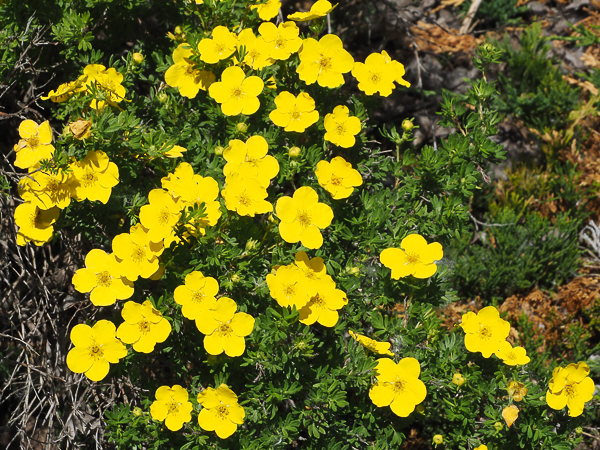We first ran across Lewis & Clark's trail in Ft. Pierre. We then touched it at the Oahe Dam. Now we were to get a closer introduction. We would see only a small part of their journey here. It spans 16 states and reaches all the way to the Pacific.
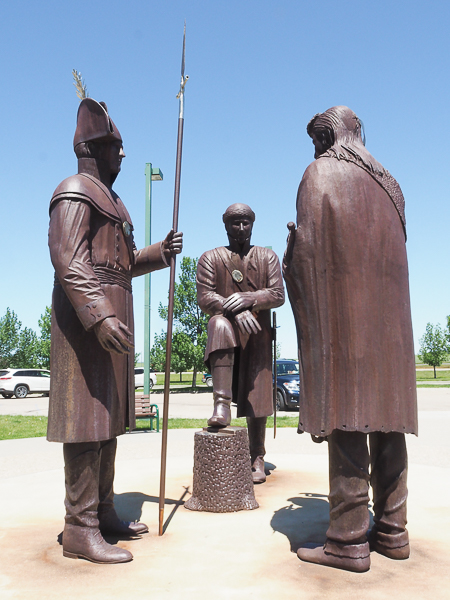
Our first stop was the Lewis & Clark Interpretive Center in Washburn, ND. It features this sculpture, by Tom Neary, that depicts Meriwether Lewis, William Clark, and Mandan chief Sheheke (back to the camera). The Corps of Discovery spent the winter of 1804-05 with the Mandan people.
It was at this time that they made the acquaintance of Toussaint Charbonneau and his wife Sacagawea (or Sakakawea). This was the second pronunciation surprise we encountered. Her name is properly pronounced Sa-COG-a-WAY-a, never SAK-a-ja-WEE-a. The Wikipedia article referenced above has an exhaustive discussion of the name, its etymology, and its spelling. She and her husband and her newborn son, Jean Baptiste, went with the expedition as interpreters since Sacagawea was Shoshone.
Clark got around the whole name thing by calling her "Janey."
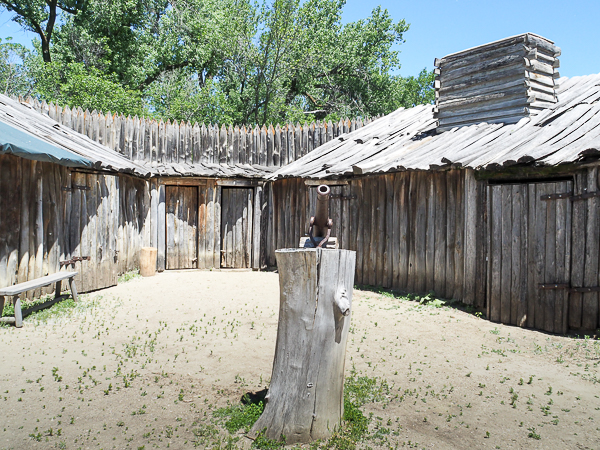
Our next stop was the reconstructed Ft. Mandan. The actual site of the fort was upriver on private land and by now has been washed into the Missouri.
Getting to this site was one of our adventures. GPS doesn't work any better in North Dakota than it does in SW Virginia. We don't know where it was taking us (maybe to the original site, now under water), but our driver, who had never been to this location, breezed past the actual turn-off. Our guide had only been once although he did recognize the road, maybe, as we passed. In any event, the GPS soon began doing back-flips, which gave us a clue that all was not right.
Mick got the bus turned around on the narrow, back-country road only to find that in the 5 minutes or so we had lost, a roadblock was put up for construction. He wheedled his way past the roadblock and we arrived safe and sound if a bit late.
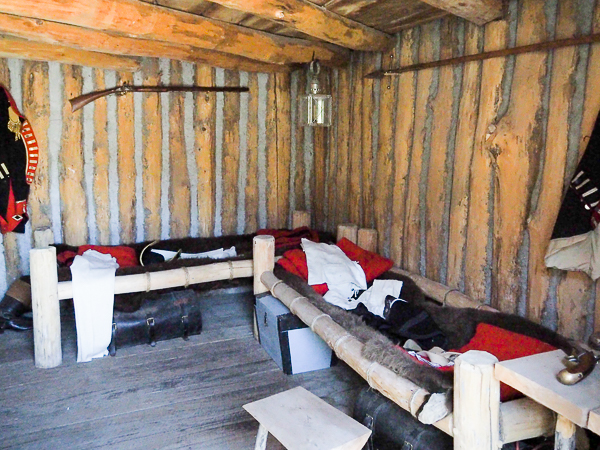
I think this was the officers' sleeping quarters. The enlisted men had bunk beds.
The rooms all had a low second story reached by a rough ladder.
After spending the winter with the Mandans, the expedition sent their keelboat back down the river with a small staff and a collection of botanical and other specimens that President Jefferson had requested. The fort was abandoned and the corps continued in dugouts.
When they returned the following year, after reaching the Pacific, they found that the fort had burned, so they made no plans to stop over. Sacagawea and her family stayed with the Mandans.
William Clark later adopted and raised Jean Baptiste Charbonneau who had an eventful life and died aged 61 in Oregon.
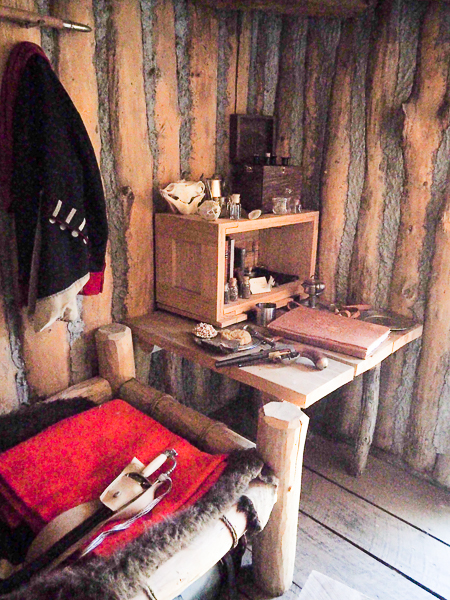
A campaign desk is easy to pack up and take along.
Not only the commanders Lewis and Clark kept notes and made collections while on the journey. Some of the other men did too.
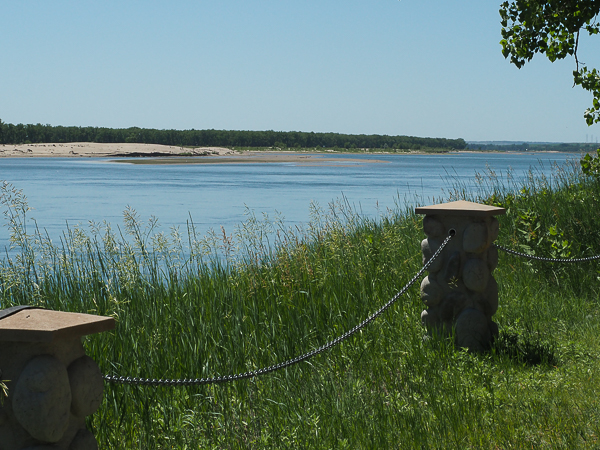
When the expedition left Ft. Mandan in the spring, they proceeded into the unknown by traveling upriver on the Missouri. Hopes of finding an easy water route to the Pacific were dashed when they reached the Rocky Mountains.
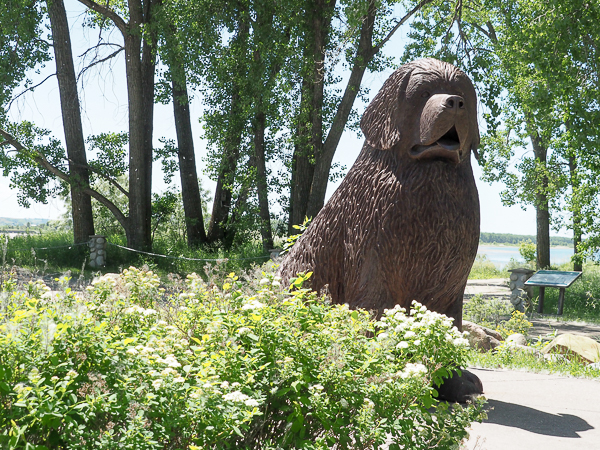
Seaman, a Newfoundland dog purchased by Meriwether Lewis specifically for the trip, has his own monument in the vicinity of Ft. Mandan. He survived the trip and remained with Lewis until Lewis died in 1809. He was reported to have pined away on Lewis' grave.
Lewis's death, aged 38, is somewhat controversial. Although most believe it was suicide, some claim he was murdered by bandits.
William Clark, on the other hand, married (twice) and had several children in addition to the two he adopted after Sacagawea's death. He died in St. Louis at age 68.
Click your "back" button to return to the previous page or click for our picture album.
